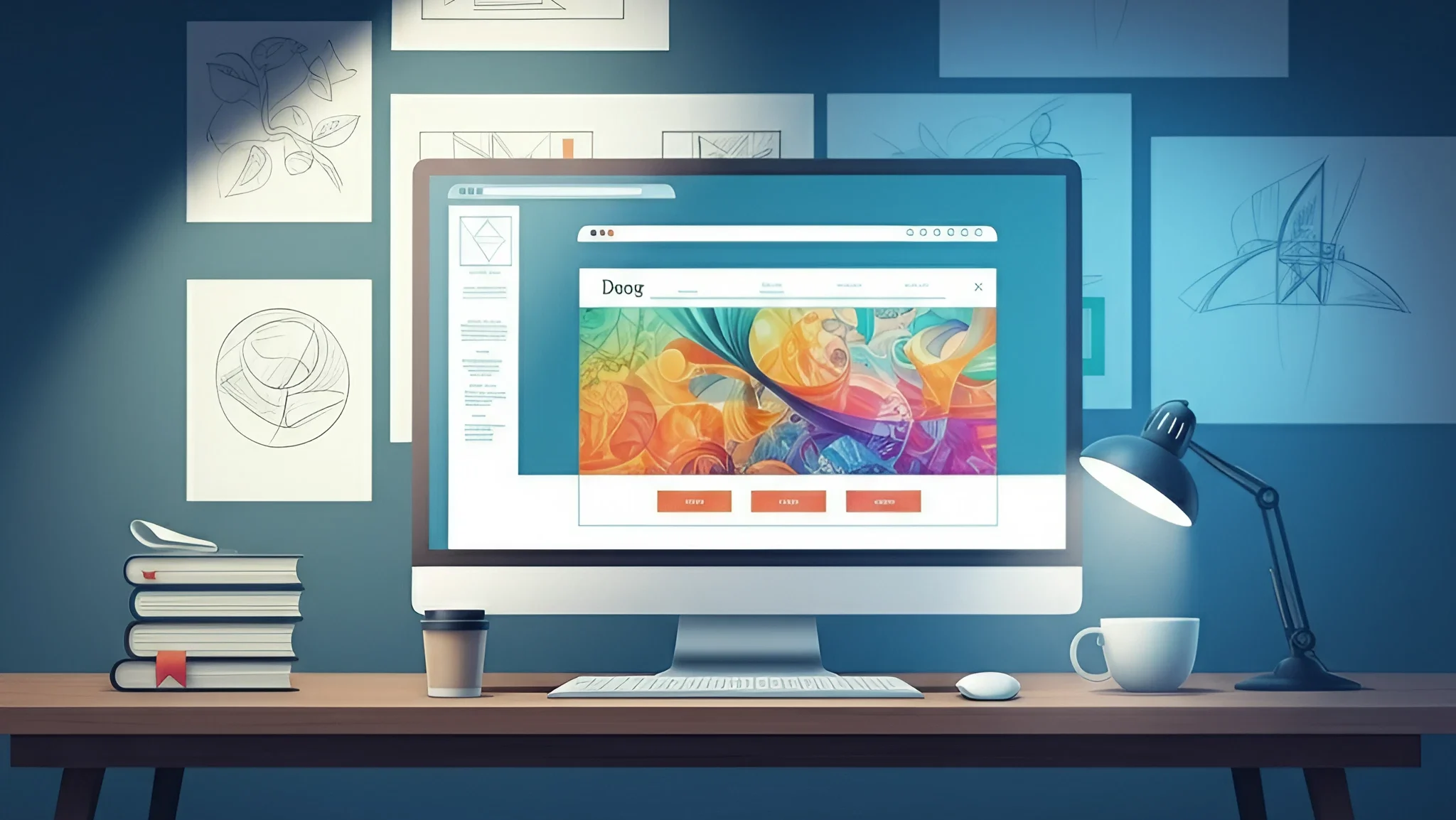Website designs are like storefronts for digital stores. They reflect the brand’s image and draw in customers. However, as a web designer or a small-business owner or a digital marketer, you’ve probably been looking at a beautifully designed site and thinking, how is it possible to copy the design the design? The answer to whether you are able to (and should) duplicate a design on a website is more complicated than it appears.
This guide will explain the legal ramifications of ethical concerns, the legal implications, and ways to use website designs for inspiration in a manner that is both responsible and innovative.
Understanding the Legalities of Website Design
Before you consider replicating a design from a website it is important to know the laws governing copyright. Although a design for a website isn’t so easy to safeguard like a book or painting, certain elements could be protected legally.

What Aspects Are Protected by Copyright?
Copyright laws usually protect original works. Websites, for instance, could include:
- Design concepts such as color schemes, layouts, and graphic art.
- Original material including images, text, as well as videos.
- The custom code (HTML, CSS and JavaScript) designed specifically for the website.
But, general concepts such as concepts, concepts, and even useful elements like navigation and grid layouts aren’t protected by copyright. You can, for instance, make a similar layout however, directly copying certain elements of design could land you in legal troubles.
What Happens If You Copy a Website Design?
Intellectual property laws may differ in accordance with your locale. Infractions to copyright could lead to litigation, fines that are hefty, and reputational harm. In addition, search engines can punish duplicate content, which could affect your site’s SEO and rankings.
The Ethics of Copying a Website Design
Even if it’s legal to copy certain elements of a website however, are you morally acceptable? If you copy a design from a website, not with the proper authorization can damage your reputation and reduce confidence.
Respect the Creative Effort
Behind every successful design lie the hours of planning, brainstorming and executing with skill. Directly copying a site without credit is a violation of the creative process and undermines the work of designers.
How to Draw Inspiration the Right Way
Instead of just copying it take these steps to create a design designed by others but doesn’t cross ethical boundaries:
- Be aware of pattern patterns in fashion trends like minimalism and bold typography. You can then apply those trends to your own brand.
- Mix thoughts from many sources instead of drawing an inspiration from a single site.
- Get permission If you plan to copy aspects of a site. Sometimes, web designers are willing to share information or ideas.
How to Copy a Website Design for Inspiration
If the site you’re looking at is worth exploring it is possible to analyze and replicate elements of the layout for personal or educational reasons without breaking copyright.
Step 1: Study the Design
Utilize online tools such as The WhatRuns as well as BuiltWith to examine the site’s frameworks, fonts and other tools. Learn how the website is designed before jumping into replicating it.
Step 2: Use Browser Developer Tools
Browsers such as Chrome and Firefox include “Inspect Element” options that let you see the website’s HTML, CSS, and JavaScript. This can help you comprehend the layout’s structure and styling without having to steal the source code.
Step 3: Recreate Elements Through Customization
If you love a certain feature like an animated menu, you can learn how to implement it online and create it in your own way with your own spin. Platforms such as W3Schools provide free tutorials to help you design similar features by starting from scratch.
Step 4: Design Drafts and Prototypes
Tools such as Figma, Adobe XD, or Sketch let you make mockups and wireframes that are inspired from your studies. This is where you’ll be able to create your own unique twist to the style.
Best Practices for Maintaining Originality
Designing unique and distinctive designs is essential to ensure the website is distinctive, while adhering to the laws of intellectual property. Here are some tips for you to keep your site unique.
Add Personal Touches
- Integrate your company’s logo along with typography and color scheme.
- Customize your graphics to align with your brand’s image.
Prioritize User Experience
Make sure your site’s design is optimized for accessibility and usability. A unique website with a user-friendly interface will instantly distinguish your website from the rest.
Use Original Content
Fill your website with exclusive content–custom-written copy, unique imagery, and videos. This not only makes your website, but it also improves the SEO.
Work with professionals
Get in touch with developers and graphic designers in order to bring your idea to reality. They can steer away from imitation while creating something that is unique.
Case Studies in Ethical Website Inspiration
To show how you can get inspiration ethically, here’s a few actual examples of businesses and designers who were able to do this well.
Case Study 1: Basecamp’s Minimal Interface
Who Was Inspirated: A project management company was impressed by Basecamp’s sleek and user-friendly design. They didn’t copy, but took similar principles of usability by creating a simple, uncluttered dashboard.
Case Study 2: Airbnb’s Search Feature
Who was Inspirated: A travel blog was looking to replicate Airbnb’s sophisticated search capabilities. They came up with their own version but adapted it to include specific filters that are unique for their site (e.g., “Best for solo travelers”).
Case Study 3: Shopify’s Product Pages
Who Was Inspiration: A boutique online retailer was impressed by the design of Shopify’s pages for products. They adopted an identical layout that was responsive, however they added customized animations and a personal branding.
These examples illustrate how companies can appreciate elements of great design, but not copy them.
Balancing Creativity, Inspiration, and Respect
Website designs can be great source of ideas, however copying them without thinking could lead to ethical and legal pitfalls. If you are aware of the legal limits and respecting the work behind the design, and putting your own creative flair it is possible to create websites that are distinctive with all the right reasons.
If you’ve had any problems or succeeded in navigating web design inspiration We’d love hearing your thoughts in the comments! For more information on web design.




